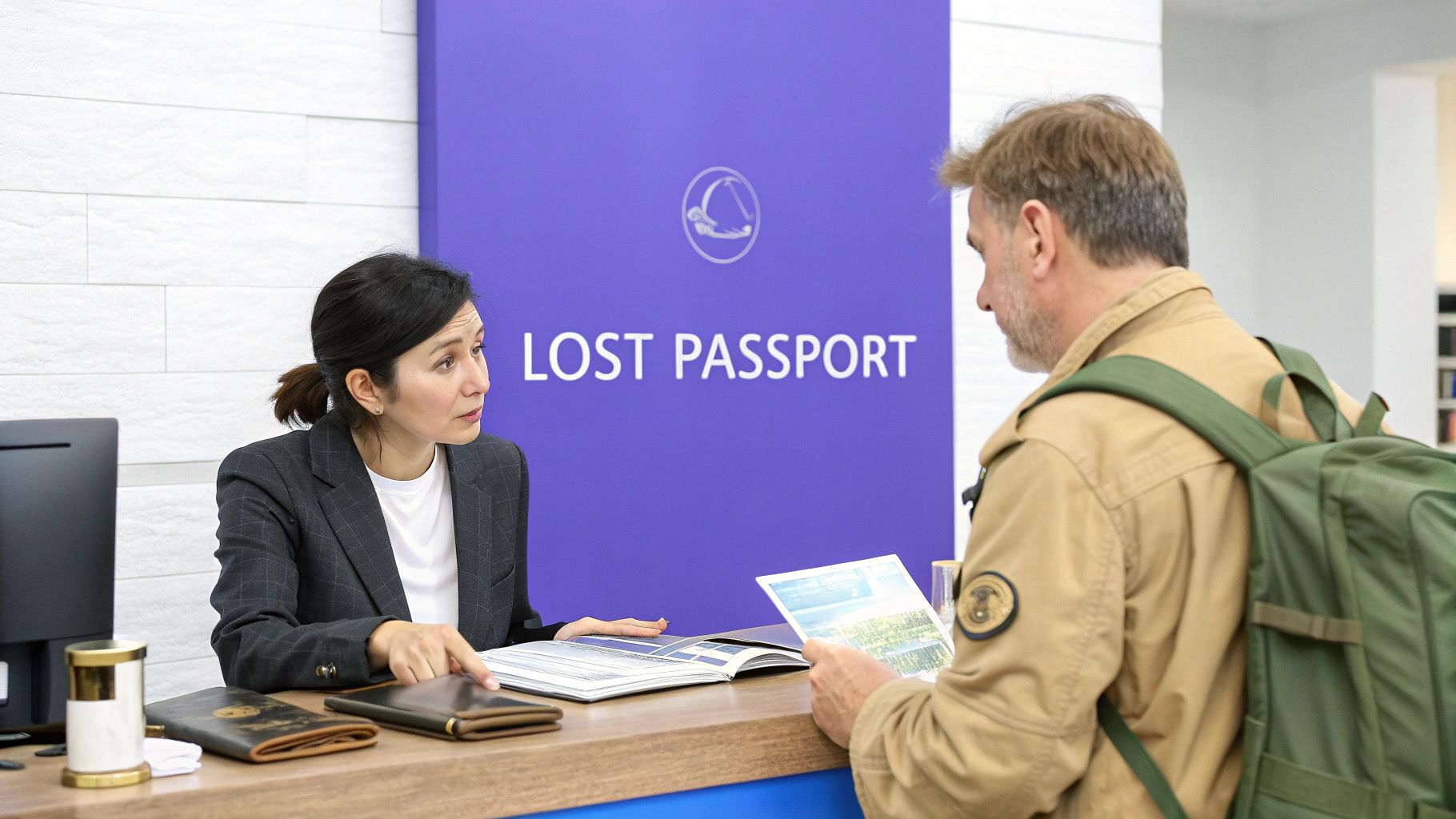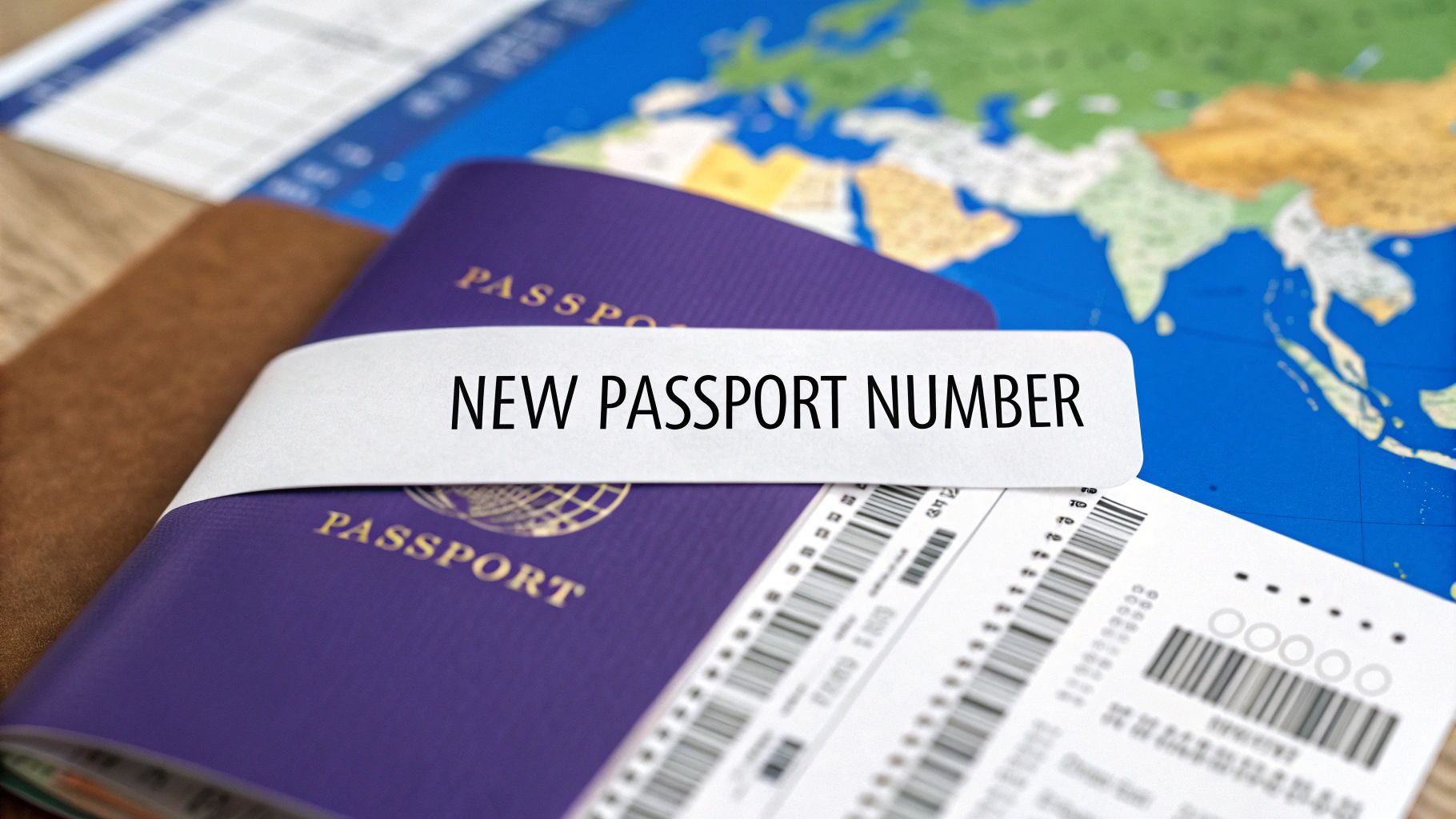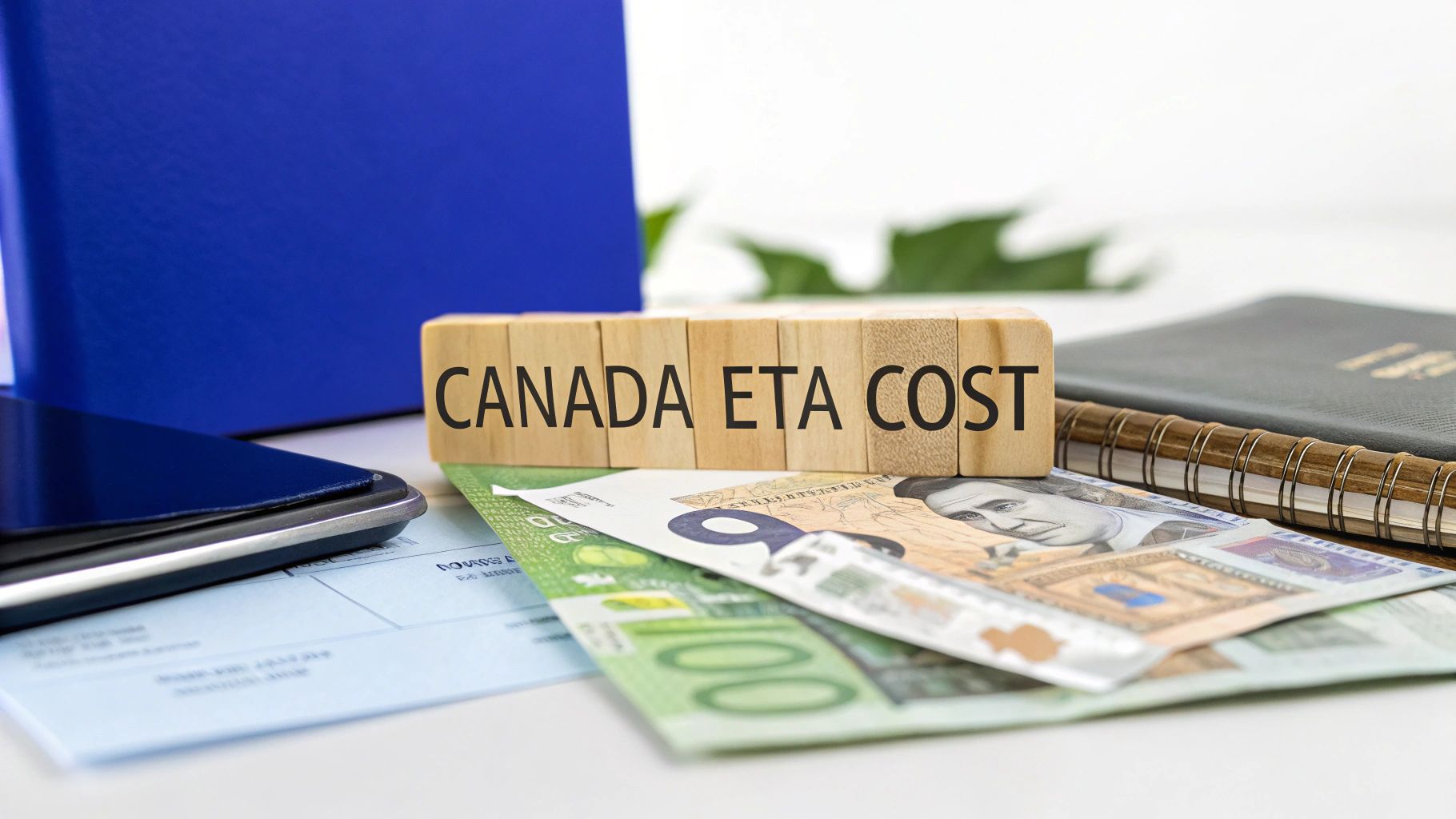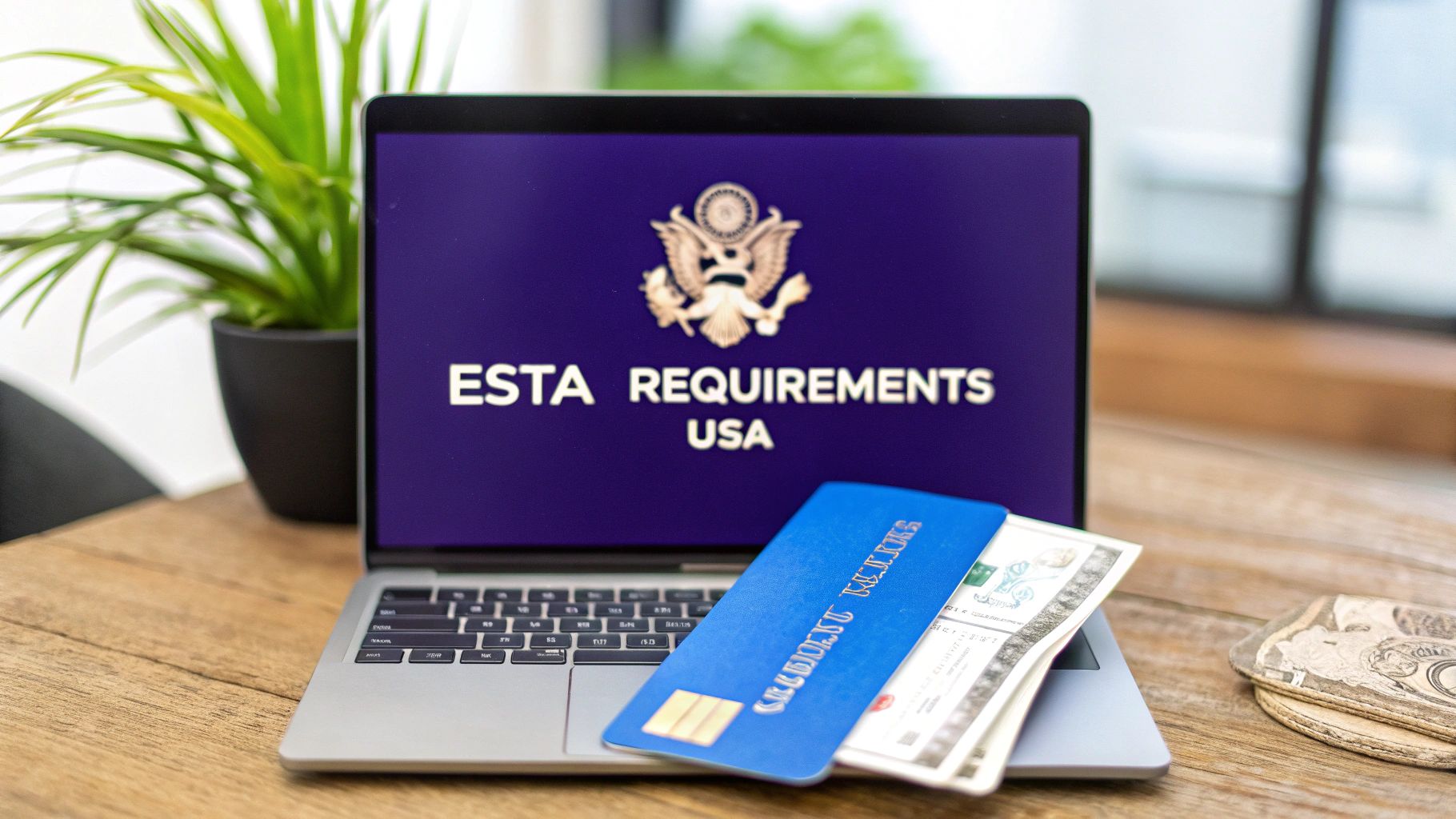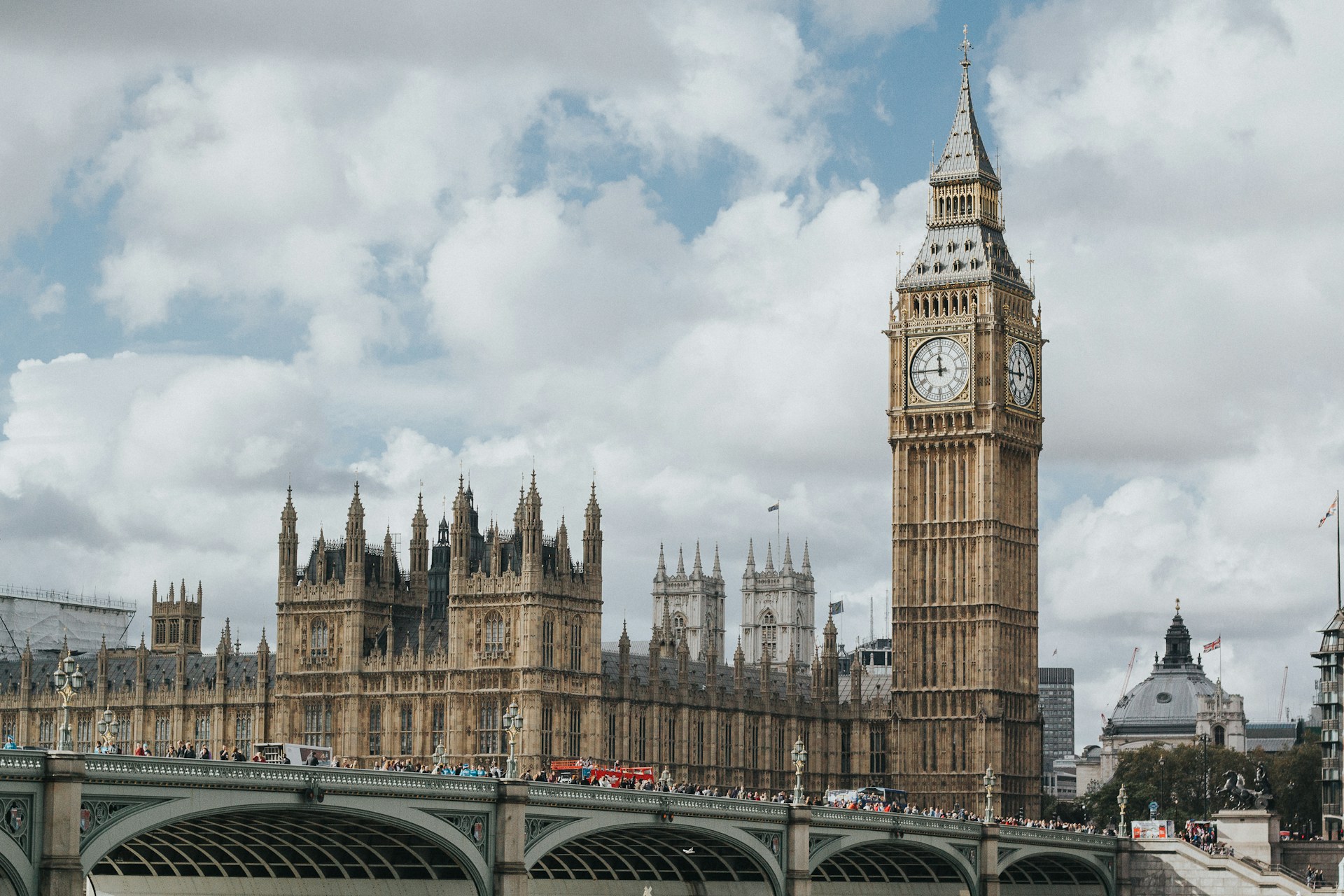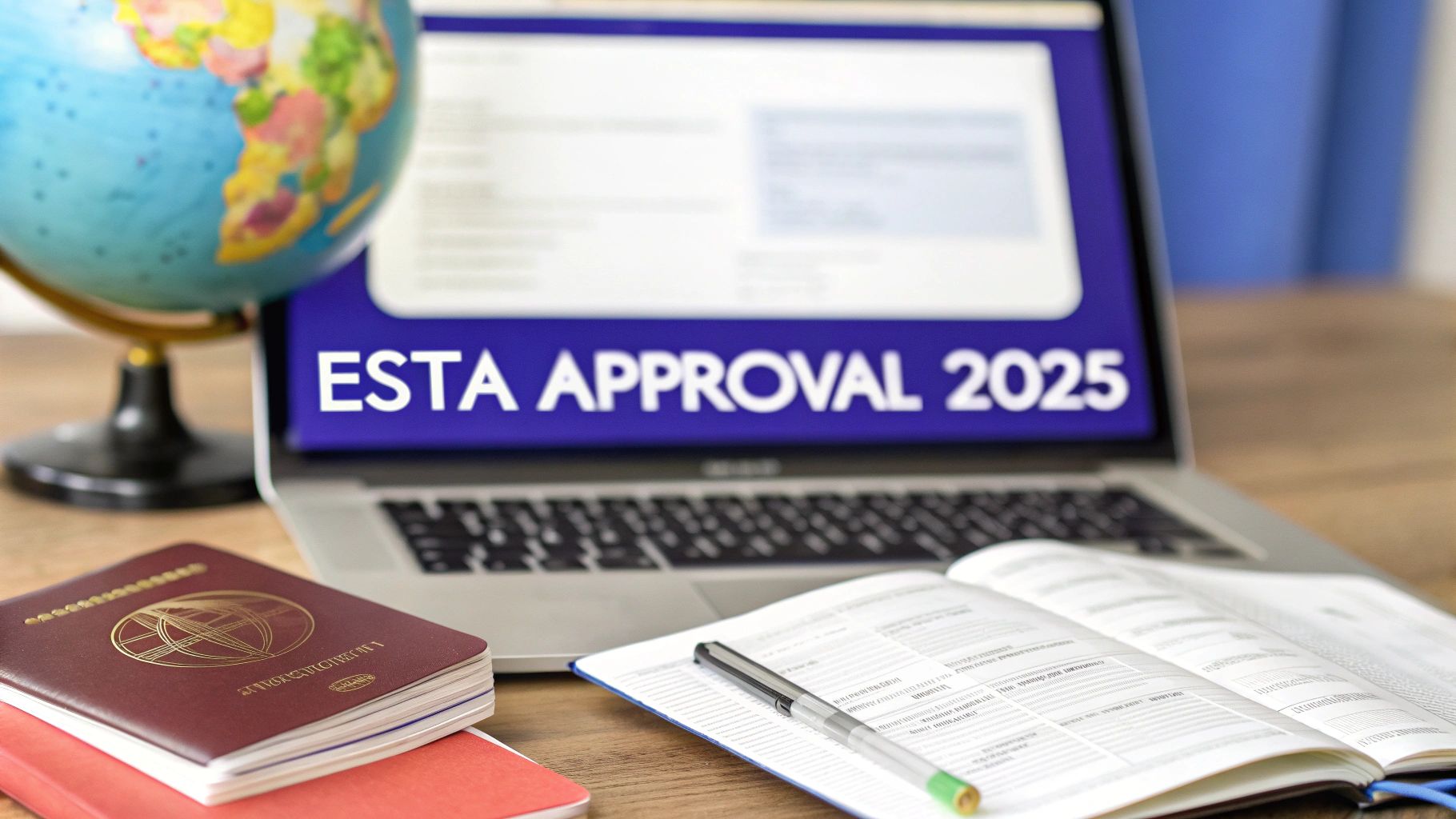
Apply for US ESTA Now: A Traveler's Guide
Planning a trip to the United States is always exciting, but before you get lost in booking flights and hotels, there’s a crucial first step you can't miss. To travel to the US without a visa, you will need to apply for US ESTA now. This mandatory pre-authorization is your green light for visiting from a Visa Waiver Program country.
Your Essential First Step for US Travel

Getting your travel authorization sorted is, without a doubt, the most important part of your initial planning. The Electronic System for Travel Authorization (ESTA) isn't a visa—think of it more like a digital permission slip that lets you board a plane or ship headed for the United States. Without an approved ESTA, your trip could be grounded before it even begins.
Consider this guide your roadmap to a successful ESTA application. We’ll break down the entire process, explaining why getting every detail right the first time is so important for avoiding the kind of delays or denials that could throw your whole trip off course.
Why Is The ESTA So Important?
The ESTA is a security measure that pre-screens travelers from the 42 countries in the Visa Waiver Program (VWP), determining your eligibility to enter the US. A simple mistake—a typo in your passport number or an incorrect date of birth—can trigger an automatic rejection.
Submitting a flawless application is non-negotiable. If you're denied, you can't just reapply with the correct info right away. You’ll likely have to go through the much longer and more complicated process of applying for a B-2 tourist visa at a U.S. embassy.
Key Takeaway: An approved ESTA is valid for two years (or until your passport expires, whichever comes first). This lets you take multiple trips to the US for up to 90 days at a time without needing a new one for each visit.
Preparing For Your Application
Before you jump into the application, take a few minutes to gather your documents and information. A little prep work makes the whole process go much smoother. You can find a detailed checklist in our guide on how to prepare for international travel: https://assistentry.com/blog/how-to-prepare-for-international-travel
Here's a quick overview of the key parts of the ESTA application to help you prepare.
ESTA Application at a Glance
| Application Component | What You Need to Know | Expert Tip |
|---|---|---|
| Personal Information | Name, birth date, gender, and parents' names exactly as they appear on your passport. | Double-check for typos. A single incorrect letter can cause a denial. |
| Passport Details | Passport number, issuing country, and expiration dates. Your passport must be an e-Passport. | Make sure your passport is valid for at least six months beyond your intended stay. |
| Travel Information | US point of contact (name, address, phone) and your address while in the US. | If you don't have a specific address yet, you can list the hotel where you plan to stay first. |
| Eligibility Questions | A series of "yes" or "no" questions about your criminal history, health, and past travel. | Answer every question honestly. Misleading answers can lead to a permanent ban. |
| Payment | The application requires a fee, payable by credit card or PayPal. | Have your payment method ready to complete the submission. The fee is currently $21. |
This table should give you a solid starting point for what to expect.
Once you have your travel documents organized, you can apply for your US ESTA with confidence. After it's approved, you can get back to the fun part of planning. That includes looking into all the additional factors to consider before booking your US trip to make sure your American adventure is perfect from start to finish.
First Things First: Are You Eligible for the Visa Waiver Program?
Before you jump into the application, let's make sure you’re actually eligible for the Visa Waiver Program (VWP). This is the absolute foundation of the ESTA system.
Getting this right from the start will save you a massive headache. If you aren't eligible, you’ll need to go the traditional visa route instead.
At its core, VWP eligibility boils down to your citizenship. You must have a passport from one of the 42 participating countries. This list covers places like the UK, Australia, Japan, South Korea, and most of the EU. But just holding one of these passports isn't always the full story.
Your Passport Must Be an e-Passport
The U.S. is very specific about the type of passport you need. It must be an e-Passport with an embedded electronic chip. This isn't just a fancy feature—the chip holds your biometric data, adding a crucial layer of security that older passports just don't have.
How can you tell if you have one? It's easy. Look for a small, rectangular symbol on the front cover that looks like a camera. This is the universal sign for an e-Passport. If your passport is missing this symbol, you'll need to get a new one before you can even think about applying for an ESTA.
The Complications of Dual Citizenship
This is where a lot of travelers get tripped up. Holding a passport from a VWP country is great, but your other citizenship could be a deal-breaker.
Let's say you're a citizen of both France (a VWP country) and Iran. Under current U.S. rules, that dual nationality makes you ineligible for an ESTA, even if you plan to travel on your French passport.
This rule specifically applies if your other citizenship is from one of these countries:
- Iran
- Iraq
- North Korea
- Sudan
- Syria
If you hold dual nationality with any of them, you have to apply for a B-2 tourist visa at a U.S. embassy or consulate. No exceptions.
Your Travel History Can Disqualify You
Even if your passport and citizenship are in the clear, your past travels can still make you ineligible for the VWP. Many applicants overlook this part, and it’s a big mistake.
Here’s a real-world example: A German citizen, who is normally a perfect VWP candidate, took a vacation to Cuba in early 2022. Because she traveled to Cuba after it was designated a State Sponsor of Terrorism, she is no longer eligible for an ESTA.
Important Takeaway: Travel to Cuba on or after January 12, 2021, or to Iran, Iraq, North Korea, Sudan, Syria, Libya, Somalia, or Yemen on or after March 1, 2011, will generally disqualify you from using the Visa Waiver Program.
There are a few narrow exceptions for official diplomatic or military business, but for the average tourist, this rule is absolute. Always double-check your travel history against this list before you apply for US ESTA now.
Be honest on your application. Hiding this information can get you denied entry at the border and possibly banned from future travel to the U.S. If this applies to you, your only option is to apply for a B-2 visitor visa.
Getting Your Application Info Ready
A smooth ESTA application starts long before you fill out the first box. Think of it as a pre-flight check. Getting all your documents and information lined up first turns a potentially tedious task into something you can knock out in minutes.
We're going to walk through exactly what you need, from the specific numbers on your passport to your travel plans. Getting a single digit wrong can trigger an automatic denial, so being precise is everything.
Your Personal and Passport Details
The heart of your application is your personal info, and it needs to be an exact match to what's in your passport. Don't go from memory or a blurry photo—grab your actual e-Passport and have it right in front of you.
You'll need to carefully copy over these details:
- Your Full Name: Write it exactly as it appears on your passport's main info page, middle names and all.
- Date and Place of Birth: City, state or province, and country.
- Passport Number: This is your key identifier. Look closely at characters that can be confusing, like an 'O' vs. a '0' or an 'I' vs. a '1'.
- Issuance and Expiration Dates: The system cross-references these to make sure your passport is valid for your trip.
You’ll also be asked for your parents' full names. This is a standard security question, so have those handy. A great tip is to take a clear, well-lit photo of your passport’s data page. If you're not sure how to get a good digital copy, our guide on how to scan a passport breaks it down for you.
Your Travel and Contact Information
Next, the application will ask about your trip to the United States. This just gives officials a basic idea of your plans.
One of the biggest questions we get is, "What if I haven't booked a hotel yet?" This is super common, and the answer is simple. Just enter the name and address of the first hotel you plan to stay at, even if it's not booked.
If your plans are truly up in the air, you can enter "UNKNOWN" in the address fields. Honestly, though, it’s always better to provide a potential hotel address if you can.
You also need a US Point of Contact. This could be a friend, family member, or a business contact. If you don't know anyone in the US, you can list your hotel here, too. Just use the hotel's name, address, and phone number.
Expert Tip: You'll also need an emergency contact from outside the US. Make sure it’s someone who isn’t traveling with you. Have their full name, email, and phone number ready to go.
Your Employment and Background Info
Finally, you’ll share a bit about your work situation. The application asks for your current or most recent employer’s name, address, and phone number.
Don't worry if you're retired, between jobs, or a student—there are options on the form for you to select. Just be honest and accurate.
Putting all of this information together beforehand makes the actual application a breeze. Seriously, if you have it all organized in a note or document, you can confidently apply for US ESTA now and be done in just a few minutes.
Navigating the Online ESTA Application Form
Alright, this is where your prep work really shines. You've got your passport and info handy, and you know you're eligible. Now it’s time to actually fill out the official online ESTA application. It can look a little intimidating at first, but it's really just a series of straightforward questions.
Let’s break down each part together, so you know exactly what to expect and where the common tripwires are. Think of it less like a rigid government form and more like a detailed questionnaire. The key is precision—a simple typo in your name or passport number is one of the quickest ways to get an automatic denial.
This visual gives you a quick overview of the main information buckets you'll be filling out.

Having these three sets of details ready to go will make the whole process feel much smoother as you move from one section to the next.
Applicant and Travel Details
First up, the application will ask for details about you and your trip. This is where you'll enter all that personal info, passport data, and employment history you gathered earlier. Don't rush this part. Double-check everything, from your parents' names to your home address.
One field that often causes confusion is the "National Identification Number." If you're from a country like the UK or Australia, you likely don't have one. In that case, you can simply enter "UNKNOWN."
When it comes to your travel plans, you'll need to provide a US Point of Contact and the address where you'll be staying. As we covered before, if your itinerary isn't finalized, that's okay. Just list the hotel you plan to stay at for your first night.
The Critical Eligibility Questions
After you've filled out your personal details, you'll come to a list of nine "yes" or "no" eligibility questions. These are non-negotiable security questions, and you have to answer them with 100% honesty. They cover topics like your health, criminal record, and any past immigration or visa issues with the U.S.
These aren't trick questions; they're designed to be direct. You'll see questions about:
- Communicable diseases or certain physical/mental disorders.
- Arrests or convictions for crimes, especially those involving "moral turpitude."
- Previous violations of U.S. immigration law.
- Any links to terrorism, espionage, or sabotage.
Answering "yes" to any of these will almost certainly mean your ESTA is denied. If that's your situation, your next step is to apply for a B-2 visitor visa at a U.S. embassy. This will give you a chance to speak with a consular officer and explain your circumstances. Whatever you do, don't lie—it can get you permanently barred from entering the United States.
Expert Insight: The questions about criminal history can be tricky. Not every single arrest or conviction will disqualify you. For more detailed advice on handling this section and other parts of the form, check out our 7 essential tips to swiftly secure your ESTA approval.
Submitting Your Group or Individual Application
The final stretch involves reviewing your information, paying the fee, and hitting submit. One really useful feature is the ability to create a group application. If you're traveling with family or friends, this lets you manage and pay for everyone at once, which is a huge time-saver.
Before you click that final "submit" button, do one last sweep of the entire application. Seriously.
- Is your name spelled exactly as it appears on your passport?
- Did you get your passport number right? (It's easy to mix up O's and 0's).
- Are all the dates in the correct MM/DD/YYYY format?
This final check is your last line of defense against the simple, preventable errors that trip up so many applicants. Once you're sure everything looks perfect, you can submit the form and make the payment. You'll then get an application number—hang onto this, as you'll need it to check your status later.
Understanding ESTA Fees and Upcoming Changes
Let's talk money. The ESTA application isn't free, but understanding how the fee is structured helps you budget for your trip, especially if you're applying for the whole family. It's not just a single charge; it's split into two parts.
Think of it this way: one part covers the administrative cost of running the system, and the other is an investment in promoting the U.S. as a travel destination.
Breaking Down the Current ESTA Fee
Right now, an ESTA application costs $21 per person. Here’s where that money goes:
- $4 Processing Charge: This is a non-refundable fee you pay just for submitting your application. It covers the basic operational costs of the ESTA system, regardless of whether you're approved or not.
- $17 Authorization Charge: You only pay this part if your ESTA is approved. This money is directed to Brand USA, a public-private partnership that markets the United States to international visitors. If your application gets denied, you won't be on the hook for this $17.
This two-tier fee structure is pretty common. For instance, you’ll find a similar model when looking into New Zealand's visa charges for travelers, where fees are allocated for both administrative and tourism-related purposes.
A Major Fee Increase Is on the Horizon
Here’s a heads-up you won’t want to miss. The U.S. government has announced a significant price hike for the ESTA. On October 1, 2025, the application fee is set to jump from $21 to $40.
That’s roughly a 90% increase. It’s the second time the fee has gone up since 2022, when it was raised from $14.
Since an approved ESTA is valid for two years and allows multiple entries, applying before the price jump is a no-brainer if you have any U.S. travel plans on the horizon. For a deeper dive into this upcoming change, you can learn more about the upcoming ESTA fee increase.
Key Takeaway: If a trip to the U.S. is even a remote possibility in the next couple of years, apply for your ESTA before October 2025. Locking in the $21 price now secures your two-year travel authorization before the cost nearly doubles.
Accepted Payment Methods and Troubleshooting
When it's time to pay, the official ESTA website is equipped to handle most major international payment methods, making the final step pretty straightforward.
Accepted Payment Types:
- MasterCard
- VISA
- American Express
- Discover (JCB, Diners Club)
- PayPal
Once your application is complete, payment is the last thing you'll do before hitting submit. If your card gets declined, don't panic—it happens.
First, just double-check all your details: card number, CVC code, and expiration date. Often, it’s a simple typo. Another common issue is that your bank's fraud detection system might automatically block an unfamiliar international transaction. A quick call to your bank to pre-authorize the charge usually solves the problem right away.
What Happens After You Submit Your Application
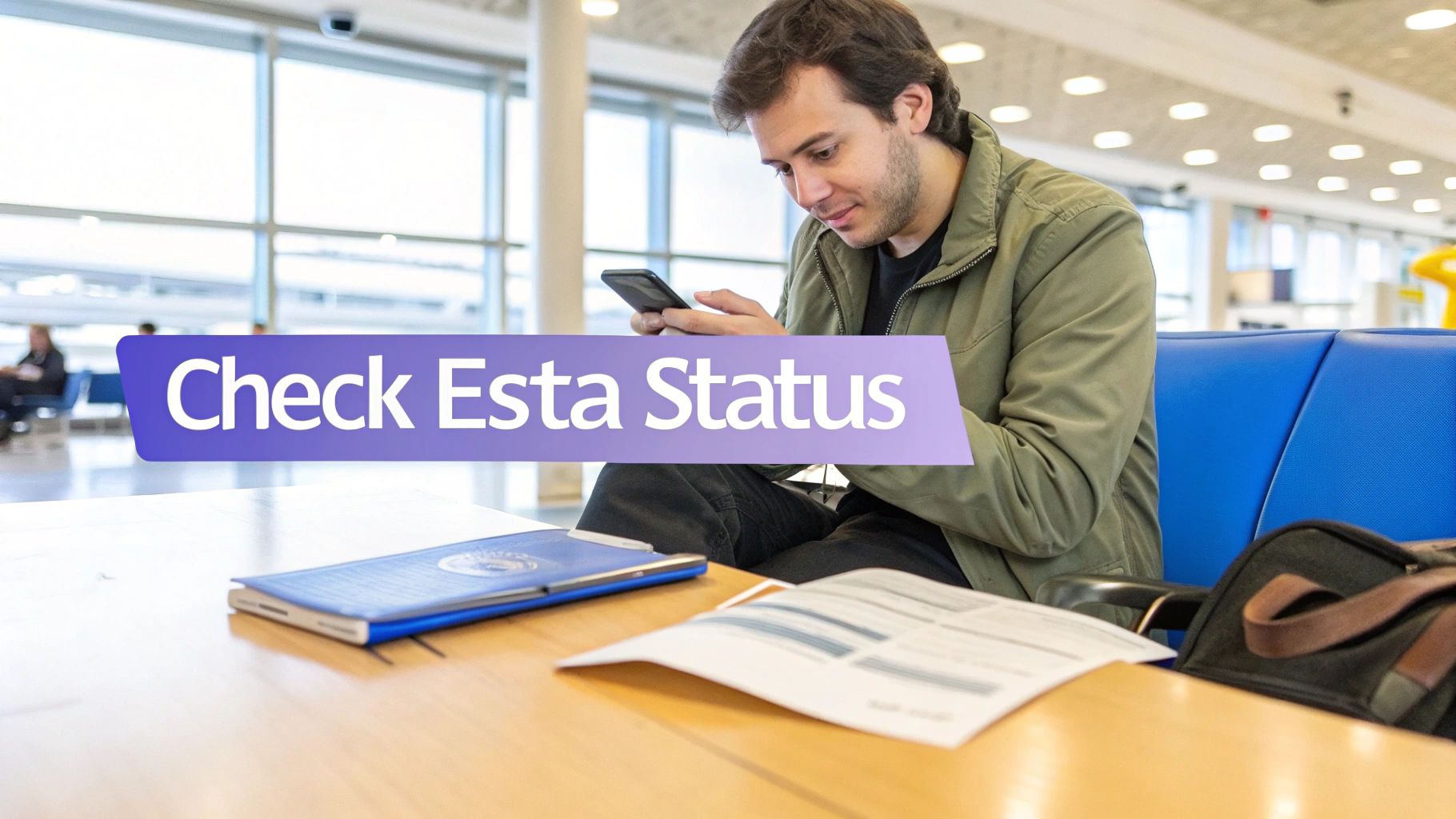
You’ve double-checked every detail and finally hit that submit button. So, what now? The waiting game begins, but thankfully, it's usually a short one.
Most applicants get an almost instant response. It’s a huge relief to see that "Authorization Approved" message pop up. This means your ESTA is good for two years (or until your passport expires, whichever comes first) and allows for multiple trips to the U.S. of up to 90 days each.
You should hang onto your application number, but you don't typically need to print out the approval to show at the airport. It's all linked electronically to your passport.
Decoding Your Application Status
Sometimes, your status might come back as "Authorization Pending." Don't panic—this is quite common. It just means your application needs a quick manual review by a real person. This can take up to 72 hours.
This is exactly why we always tell people to apply for US ESTA now, well before their trip. The last thing you want is to be anxiously refreshing the page the night before your flight.
The most stressful outcome, of course, is "Travel Not Authorized." This is a denial, but it doesn't mean you're banned from the U.S. forever. It simply means you can't use the Visa Waiver Program for this trip. Your next move would be applying for a B-2 tourist visa through a U.S. embassy or consulate.
You can check on your application anytime on the official ESTA site using your passport number, date of birth, and application number. If you want a deeper dive into what the different statuses mean, our guide to understanding your visa application status has you covered.
Navigating Similar Travel Authorizations for the UK and Canada
If your travel plans extend beyond the U.S., you'll find similar systems in other countries. The UK has its Electronic Travel Authorisation (UK ETA), and Canada uses the Electronic Travel Authorization (Canada eTA). Both work on the same principle: get approved online before you fly.
Just like with the ESTA, small mistakes on these forms can cause big headaches. To simplify your Canada eTA application and increase your chances of approval, consider using AssistEntry — their experts guide you through the entire process, starting from just $79. As a third-party application assistance provider, they perform full verification, error-checking, and a compliance review to increase your chances of approval due to expert handling.
Common ESTA Questions, Answered
Planning a trip to the US involves a few key steps, and getting your ESTA right is one of the most important. Here are some quick answers to the questions we hear all the time from travelers.
How Far in Advance Should I Apply for My ESTA?
My best advice? Apply as soon as your travel dates are locked in.
While many ESTA applications get approved almost instantly, you should always plan for a potential delay. We strongly recommend applying at least 72 hours before you head to the airport. Some applications get flagged for a manual review, and that can take up to three days to clear. Applying early is the easiest way to avoid any last-minute panic.
I Made a Mistake on My Application—What Now?
This is a big one. Unfortunately, once you submit your application, you cannot go back and edit critical biographical details like your name, date of birth, or passport number.
If you find a mistake in one of these key fields, your only option is to submit a brand-new application and pay the fee again. It's a frustrating situation, which is why it's absolutely crucial to double-check every single detail before you hit that submit button.
Does an Approved ESTA Guarantee I Can Enter the US?
No, and this is a common misconception. Getting an approved ESTA only authorizes you to board a flight or ship headed for the United States. It gets you to the border, but it doesn't automatically get you through it.
The final decision on whether you can enter the country rests with the U.S. Customs and Border Protection (CBP) officer you meet at your port of entry. They will conduct a brief inspection to confirm your admissibility.
Think of it this way: your ESTA gets you to the door, but the CBP officer is the one holding the key.
Navigating these travel rules can be tricky, whether you're headed to the US, UK, or Canada. Each country has its own system where tiny mistakes can cause major headaches. For anyone planning a trip across the pond, making sure your UK ETA application is perfect is just as important.
To simplify your UK ETA application and increase your chances of approval, consider using AssistEntry — their experts guide you through the entire process, starting from just $79. As a third-party application assistance provider, their service includes full verification, error-checking, and compliance review to ensure your application is handled by experts, helping you avoid costly delays and mistakes.
